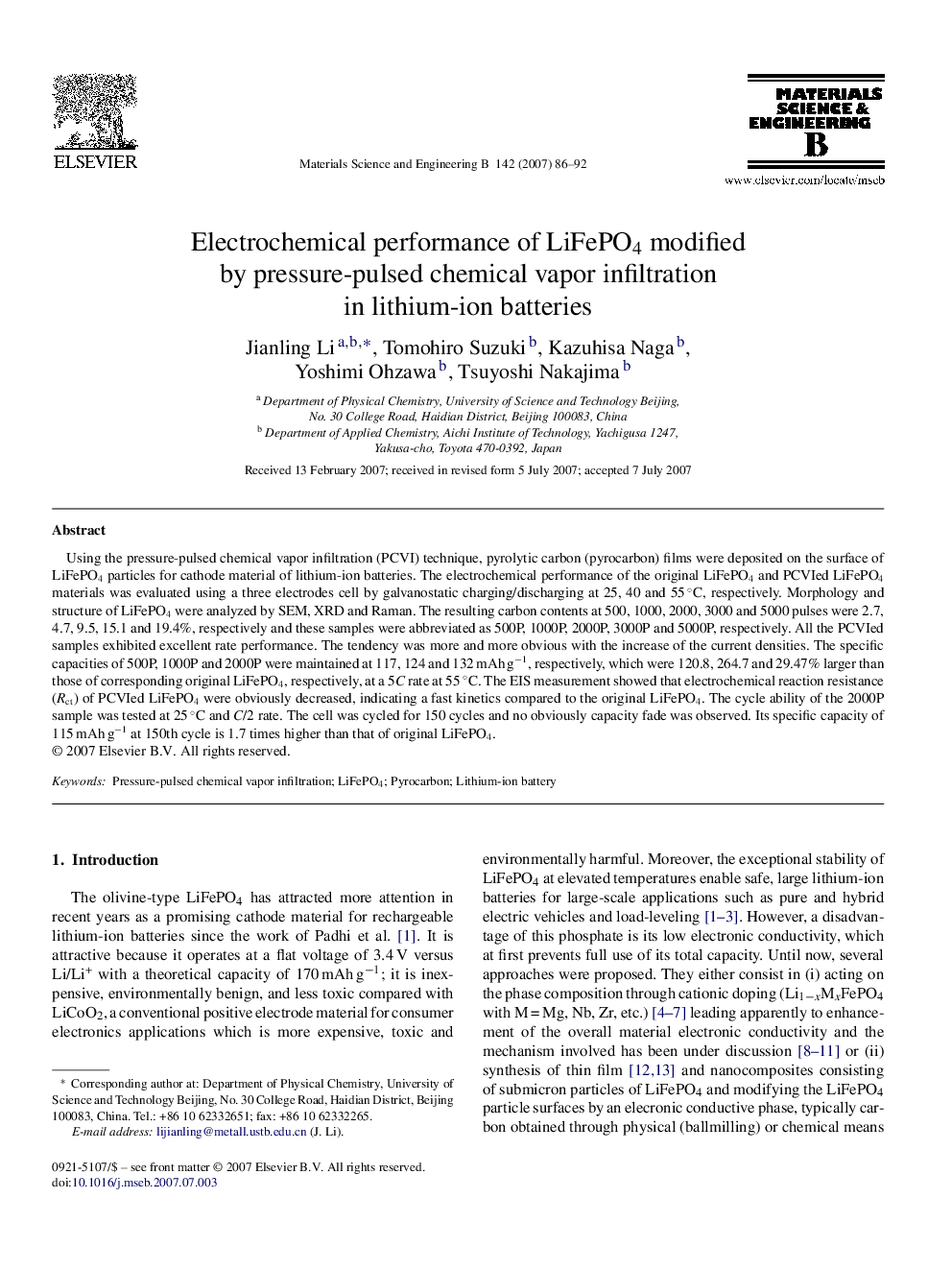| Article ID | Journal | Published Year | Pages | File Type |
|---|---|---|---|---|
| 1531191 | Materials Science and Engineering: B | 2007 | 7 Pages |
Abstract
Using the pressure-pulsed chemical vapor infiltration (PCVI) technique, pyrolytic carbon (pyrocarbon) films were deposited on the surface of LiFePO4 particles for cathode material of lithium-ion batteries. The electrochemical performance of the original LiFePO4 and PCVIed LiFePO4 materials was evaluated using a three electrodes cell by galvanostatic charging/discharging at 25, 40 and 55 °C, respectively. Morphology and structure of LiFePO4 were analyzed by SEM, XRD and Raman. The resulting carbon contents at 500, 1000, 2000, 3000 and 5000 pulses were 2.7, 4.7, 9.5, 15.1 and 19.4%, respectively and these samples were abbreviated as 500P, 1000P, 2000P, 3000P and 5000P, respectively. All the PCVIed samples exhibited excellent rate performance. The tendency was more and more obvious with the increase of the current densities. The specific capacities of 500P, 1000P and 2000P were maintained at 117, 124 and 132 mAh gâ1, respectively, which were 120.8, 264.7 and 29.47% larger than those of corresponding original LiFePO4, respectively, at a 5C rate at 55 °C. The EIS measurement showed that electrochemical reaction resistance (Rct) of PCVIed LiFePO4 were obviously decreased, indicating a fast kinetics compared to the original LiFePO4. The cycle ability of the 2000P sample was tested at 25 °C and C/2 rate. The cell was cycled for 150 cycles and no obviously capacity fade was observed. Its specific capacity of 115 mAh gâ1 at 150th cycle is 1.7 times higher than that of original LiFePO4.
Keywords
Related Topics
Physical Sciences and Engineering
Materials Science
Electronic, Optical and Magnetic Materials
Authors
Jianling Li, Tomohiro Suzuki, Kazuhisa Naga, Yoshimi Ohzawa, Tsuyoshi Nakajima,
